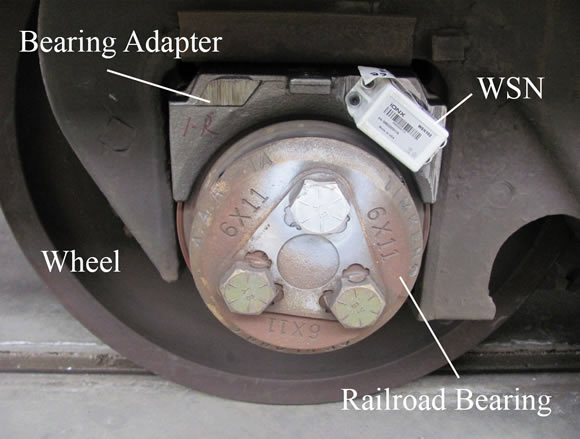Vibration and Thermal Data Analysis
Data Acquisition and Analysis
The UTRGV Railroad Research Group has been responsible for programming data acquisition and developing numerical codes for frequency- and time-domain analyses of both laboratory and field acquired data. Faculty work alongside students to develop algorithms to identify faulty bearings in situ and do predictive diagnostics based on statistical analyses of periodic, onboard thermal signals. In particular, the undergraduate and graduate students cultivate skills in monitoring, measuring, and assessing railroad bearing defects (see image below) using thermal data and vibration signatures. Supplementing these studies has been the development of a number of wireless data acquisition systems for bearing health monitoring.
Cone Spall Defect
Utilizing MATLAB®, codes were devised to automate frequency- and time-domain response analyses of bearing vibration acquired data. Programmable data acquisition systems are setup to monitor and record temperature, vibration, and load data. The collected data is used to develop algorithms that can differentiate between defect-free and defective bearings. Moreover, the relationship between the vibration and temperature data is used to distinguish between defect-free bearings undergoing temperature trending events and faulty bearings. The devised algorithms are capable of detecting the onset of spall initiation on bearing component raceways, and quantifying the severity of these defects.

Wireless Sensor Node Typical Field Installation
The UTRGV Railroad Research Group (RRG) participated in two large scale field tests, one in the United States, and one in Australia. In each field test, Wireless Sensor Nodes (WSNs), depicted in the figure above, were attached to adapters to provide individual bearing thermal data to a Communication Management Unit (CMU) located on each railcar. The CMU then sent the information via cellular networks to a remote server which can be accessed by the UTRGV research group for data analysis and algorithm development. Reports and presentations were then prepared by the UTRGV RRG and submitted to the appropriate parties.